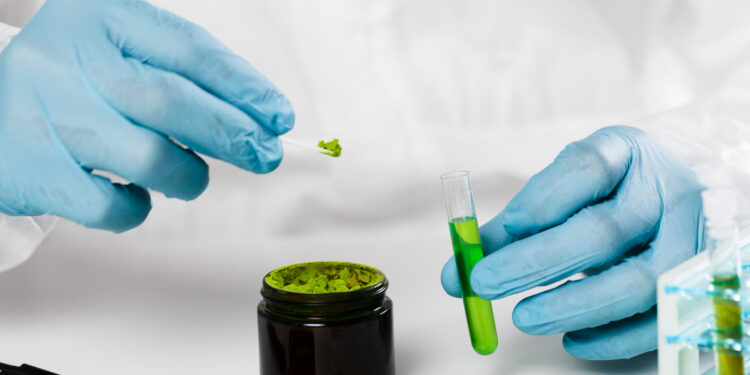The conversation around cannabis has evolved significantly over the past few decades. What was once primarily a taboo subject is now a topic of serious discussion, ranging from its medicinal benefits to its legalization for recreational use. But what exactly do we know about cannabis, and where does the future of this controversial plant lie? Let’s explore the complexities of cannabis, its uses, and the surrounding debates.
What is Cannabis?
Cannabis refers to a genus of flowering plants that includes three main species: Cannabis sativa, Cannabis indica, and Cannabis ruderalis. These plants are known for producing compounds called cannabinoids, which have various effects on the human body. The two most well-known cannabinoids are tetrahydrocannabinol (THC) and cannabidiol (CBD).
- THC is responsible for the psychoactive effects, or the “high,” that people experience when using cannabis recreationally.
- CBD, on the other hand, does not produce a high but is highly regarded for its potential therapeutic effects.
Cannabis has a wide range of applications, from medical treatments to industrial hemp production, but it remains surrounded by controversy, particularly regarding its legal status.
Medical Benefits of Cannabis
Pain Management and Inflammation Relief
One of the most widely recognized benefits of cannabis is its ability to help manage pain. THC and CBD interact with the body’s endocannabinoid system, which plays a crucial role in regulating pain, mood, and inflammation. Cannabis has shown promise in alleviating chronic pain, making it a viable alternative to opioids, which have highly addictive properties.
Studies have demonstrated that cannabis can reduce inflammation, particularly in conditions like arthritis, fibromyalgia, and multiple sclerosis. According to Dr. Ethan Russo, a well-known cannabis researcher, “The anti-inflammatory effects of cannabinoids are quite profound, offering relief without the risks of long-term nonsteroidal anti-inflammatory drugs.”
Anxiety and Mental Health Support
Anxiety and mental health conditions such as PTSD (Post-Traumatic Stress Disorder) are increasingly being treated with medical cannabis. CBD, in particular, has shown significant anxiolytic (anxiety-reducing) effects. This has made it popular for those looking to manage stress and anxiety without the side effects of traditional medications.
However, it’s essential to note that not all cannabis users experience positive mental health outcomes. High doses of THC can exacerbate anxiety and may trigger paranoia in some users. This underscores the need for personalized, controlled usage, particularly when managing mental health.
Risks Associated with Cannabis Use
Addiction and Dependency
While cannabis is not as addictive as other substances like nicotine or alcohol, it is still possible to develop a cannabis use disorder. Around 9% of cannabis users may develop a dependency, which can lead to withdrawal symptoms like irritability, insomnia, and loss of appetite. This potential risk must be balanced with its medical and recreational benefits.
Impact on Brain Development
Cannabis use, particularly in adolescents, can impact brain development. Studies have shown that regular use during the teenage years can affect cognitive function, memory, and motivation. This is especially concerning given that the prefrontal cortex, which governs decision-making and impulse control, continues to develop into a person’s mid-20s.
For adults, moderate use has fewer documented negative effects, but it’s crucial to recognize that cannabis is not without its risks. As Dr. Nora Volkow, Director of the National Institute on Drug Abuse, states, “There is still much we do not know about the long-term effects of cannabis, particularly its impact on the developing brain.”
Legalization and Regulation of Cannabis
The Legal Landscape Around the World
The legal status of cannabis varies dramatically across the globe. In some countries, like Canada and Uruguay, cannabis is legal for both medicinal and recreational use. In contrast, many parts of the world still criminalize its use, with harsh penalties for possession and distribution.
In the United States, cannabis laws differ from state to state. As of now, 38 states have legalized medical cannabis, while 23 states and Washington, D.C., allow recreational use. However, it remains illegal at the federal level, creating a complex and often contradictory legal landscape.
Regulation for Public Health and Safety
As more countries and states move toward legalization, the need for robust regulation becomes increasingly apparent. Issues such as product safety, labeling, and age restrictions need to be carefully managed to prevent misuse and ensure consumer protection.
For example, in legalized markets, cannabis products must undergo testing for potency, pesticides, and contaminants. This ensures that consumers know exactly what they are purchasing and reduces the risk of adverse effects from poorly regulated products.
The Future of Cannabis
Research and Innovation
With legalization comes the opportunity for increased research into cannabis and its compounds. Scientists are now exploring the plant’s full potential, particularly in areas like cancer treatment, neuroprotection, and mental health therapy.
For instance, the use of cannabis in oncology is expanding. Preliminary research suggests that cannabinoids may help alleviate chemotherapy-induced nausea and may even have anti-tumor properties. However, more research is necessary to fully understand these effects.
Moreover, the cannabis industry is rapidly evolving with new products like edibles, tinctures, and topicals entering the market. This not only broadens how people can consume cannabis but also diversifies its appeal beyond traditional smoking methods.
Sustainable Practices and Industrial Hemp
Beyond its medicinal and recreational uses, cannabis has the potential to drive sustainability through industrial hemp. Hemp, a variety of Cannabis sativa, can be used in textiles, biodegradable plastics, construction materials, and even as a biofuel. Hemp’s ability to grow quickly and in a variety of climates makes it an eco-friendly option in industries that are looking for alternatives to petroleum-based products.
Hemp is being dubbed “green gold,” with the potential to revolutionize industries by offering environmentally sustainable materials. According to environmental expert Bruce Dietzen, “Hemp offers a real chance to move toward a more sustainable and eco-friendly economy.”
Conclusion: The Balance of Benefits and Risks
As cannabis becomes more mainstream, understanding its benefits and risks is crucial for both consumers and policymakers. From its medical uses to the potential downsides of misuse, cannabis is a complex plant that demands a nuanced approach.
So, where does the future of cannabis lie? Further research and thoughtful regulation are essential for maximizing its potential while minimizing risks. As we move toward a more informed and balanced view of cannabis, its role in medicine, recreation, and industry is sure to expand.
Are you ready to explore the future of cannabis for yourself? Make informed choices, and if you’re in a region where cannabis is legal, consult with a healthcare professional before using it for medicinal purposes. The journey of cannabis is just beginning, and understanding its full potential will benefit individuals and societies alike.
IROA Technologies is simplifying the metabolomics research requirements with its scientific technologies. It's cost-effective in nature and is used by many customers for metabolomics research. We offer various types of services like metabolite standards, amino acid library, organic acid metabolites, ion suppression, and many more.

















































